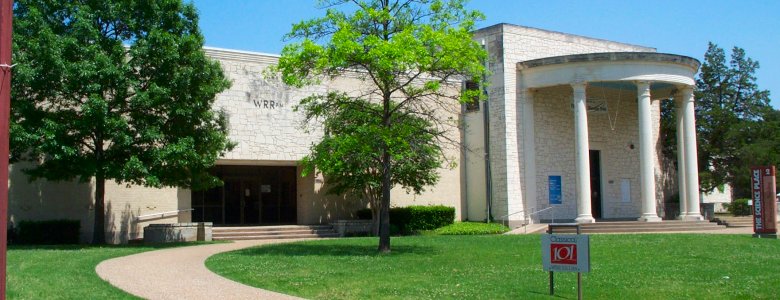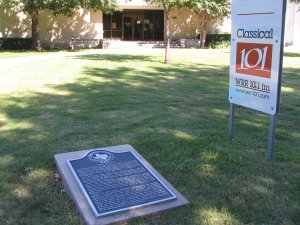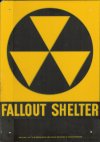|
|
Science Place II and WRR Radio Studios
|
In June 2006 the Science Museum was merged with the Dallas Children's Museum and the Natural History Museum to form a single entity, the Museum of Science and Nature. On December 1, 2012 the MSN will be reopened in downtown Dallas as the Perot Museum of Nature and Science, leaving the original buildings in Fair Park abandoned and empty for the first time since 1936. This web page contains historic information featuring the Science Museum as it existed prior to its move to downtown Dallas. |

When the Hall of Domestic Arts, now Science Place II, opened in 1936 at the corner of what was then San Jacinto and Goliad Drives (now First Avenue and M. L. King, Jr. Blvd.), it was declared to be "one of the most beautiful of the many permanent halls at the Centennial Exposition." Its cost was $90,000. The south entrance to this building features semi-circular portico with tall, cut-stone pillars. Its design is said to be a "blending of Georgian and Colonial influences with modern classic architecture." The walls, which have tall windows at intervals, are faced with Ashlar stone, a type of native Texas limestone, and are trimmed with brick facings and cut-stone insets.
Following the Texas Centennial Exposition, this building housed the Dallas Science and Health Museum. After the Art Museum moved downtown and its old home became Science Place I, this structure was renamed Science Place II.
When I last visited, in early 2004, the building was undergoing renovation but the Planetarium continues to offer its regular schedule of shows. A small collection of space-related items, including a replica of a lunar sample from one of the Apollo missions of the early 1970s, can be seen on the ground floor but these may soon be replaced or upgraded.
 Immediately next-door to Science Place II is the home of city-owned radio station WRR (FM 101.1). It is the only classical music station in North Texas and one of the very few municipally-owned stations in the United States. It was begun in the early 1920s by Henry "Dad" Garrett, the great-uncle of the author of this Web site. To learn more about Garrett and how the station got started, read: "Dad Garrett: The Wizard of Dallas, Texas" in the history journal Legacies.
Immediately next-door to Science Place II is the home of city-owned radio station WRR (FM 101.1). It is the only classical music station in North Texas and one of the very few municipally-owned stations in the United States. It was begun in the early 1920s by Henry "Dad" Garrett, the great-uncle of the author of this Web site. To learn more about Garrett and how the station got started, read: "Dad Garrett: The Wizard of Dallas, Texas" in the history journal Legacies.
To learn more about the station or to listen online, visit the WRR Web site.
|
To learn more about the shelter, visit Eric Green's Old Dallas Civil Defense Emergency Operations Center Tour. |
This website copyright © 2002-2012 (except where noted) by Steven Butler. All rights reserved.
 One of the building's most interesting features, unfortunately, is not open to the general public. It is a fallout shelter that was built in the early 1960s, when the possibility of a nuclear war between the United States and the Soviet Union seemed most likely. To the right is a view from the bottom of the steps leading down into the shelter.
One of the building's most interesting features, unfortunately, is not open to the general public. It is a fallout shelter that was built in the early 1960s, when the possibility of a nuclear war between the United States and the Soviet Union seemed most likely. To the right is a view from the bottom of the steps leading down into the shelter. In the event of an attack, the mayor and city council, as well as the chief of police and other important city department heads were supposed to go to the shelter. It was designed to act as a central command post from which disaster services could be planned, coordinated, and monitored.
In the event of an attack, the mayor and city council, as well as the chief of police and other important city department heads were supposed to go to the shelter. It was designed to act as a central command post from which disaster services could be planned, coordinated, and monitored.